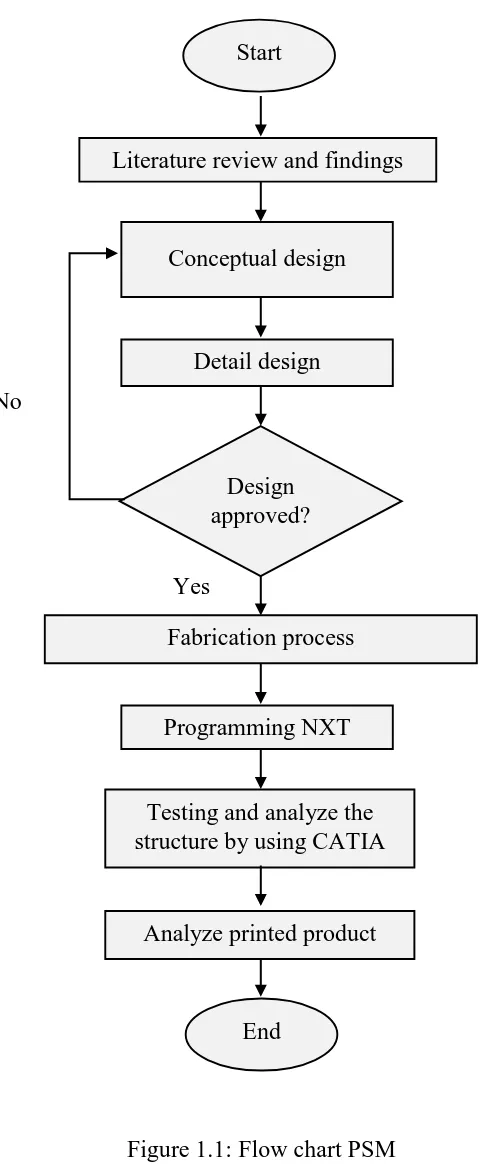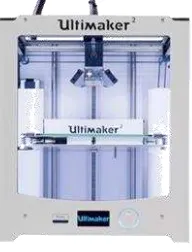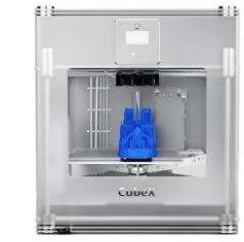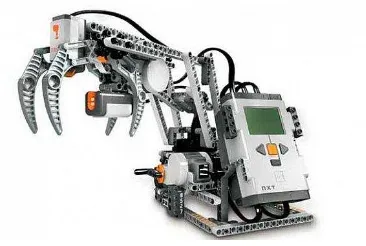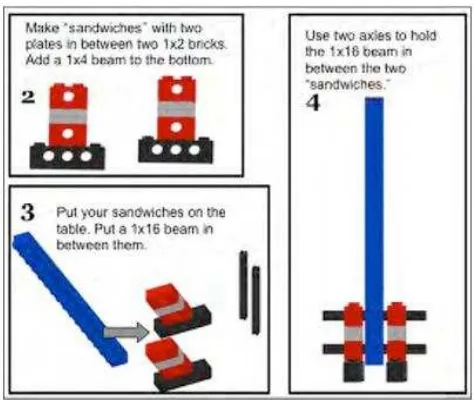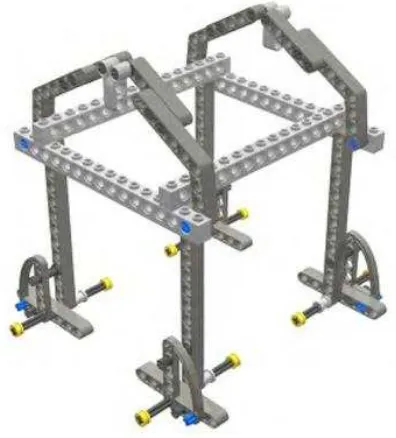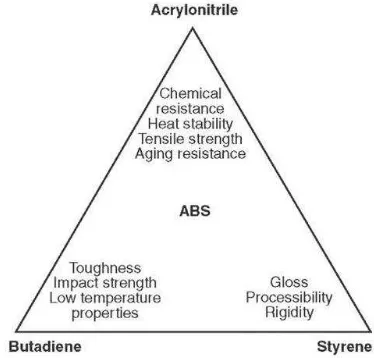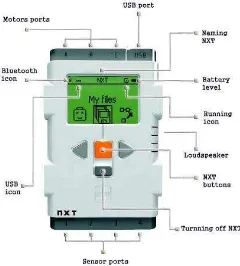SUPERVISOR DECLARATION
“I hereby declare that I have read this thesis and in my opinion this report is sufficient in terms of scope and quality for the award of the degree of
Bachelor of Mechanical Engineering (Design and Innovation)”
DEVELOPING A LEGO-BOT 3D PRINTER
MOHAMAD TAJUDDIN BIN RAMLI
This report is submitted in fulfillment of the requirement for the degree of Bachelor Degree of Mechanical Engineering (Design and Innovation)
Fakulti Kejuruteraan Mekanikal Universiti Teknikal Malaysia Melaka
i
DECLARATION
“I hereby declare that the work in this report is my own except for summaries and quotation which have been duly acknowledged.”
Signature: ………
Author: ………
ABSTRACT
iii
ABSTRAK
CONTENTS
CHAPTER TITLE PAGES
DECLARATION i
ABSTRACT ii
ABSTRAK iii
CONTENT iv
LIST OF TABLES vii
LIST OF FIGURES viii
LIST OF APPENDICES xi
CHAPTER 1 INTRODUCTION 1
1.1 Background Project 1
1.2 Problem Statement 2
1.3 Objectives 2
1.4 Scope of Project 2
1.5 Flow Chart 3
CHAPTER 2 LITERATURE REVIEW 4
2.1 Developing a Lego-Bot 3D Printer 4
2.2 3D Printing Technology 5
2.3 Lego Technology 6
2.3.1 Lego Properties 10
v
CHAPTER 3 METHODOLOGY 12
3.1 Location and Duration 12
3.2 Equipment, Apparatus and Design Tools 13
3.3 Literature Review and Findings 13
3.4 Conceptual Design 13
3.4.1 House of Quality 14
3.4.2 Morphological Chart 14
3.4.3 Concept Design Selection 14
3.5 Detail Design 15
3.6 Fabrication Process 15
3.7 NXT Programming 15
3.8 Testing and Analysis 16
CHAPTER 4 DESIGN 17
4.1 Conceptual Design 18
4.1.1 House of Quality 18
4.1.2 Morphological Chart 19
4.1.3 Concept Selection 20
4.1.3.1 Frame Construction 20
4.1.3.2 Working Mechanism on Print Bed 21
4.1.3.3 Working Mechanism on Frame 21
4.1.3.4 Motor 21
4.1.3.5 Extruder 22
4.1.4 Complete design selection 22
4.2.1 Detailed engineering drawing 24
4.3 Result Analysis 26
4.3.1 Finite Element Analysis 26
4.3.2 Analysis on the structure beam 28
4.4 Discussion 31
CHAPTER 5 FABRICATION 32
5.1 Fabrication Process 33
5.1.1 Phase 1 33
5.1.2 Phase 2 36
5.2 NXT Programming 39
5.3 Results Analysis 41
5.3.1 Product Analysis 41
5.4 Discussion 43
CHAPTER 6 CONCLUSION AND FUTURE RESEARCH 44
6.1 Conclusion 44
6.2 Future Research 45
REFERENCES 46
APPENDIX A 48
vii
LIST OF TABLES
NO. TITLE PAGES
4.1 House of Quality for Lego-Bot 3D printer 18
4.2 Morphological chart 19
4.3 FEA results and the factor of safety 27
5.1 NXT programming of the sample 41
LIST OF FIGURES
NO. TITLE PAGES
1.1 Flow chart PSM 3
2.1 Ultimaker
(source: www.toptenreviews.com) 5
2.2 Figure 2.2: Cubify CubePro
(source: www.toptenreviews.com) 5
2.3 Cubify CubeX
(source: www.toptenreviews.com) 6
2.4 Lego Classis model
(source: www.flickr.com) 7
2.5 Lego Technics model
(source: www.flickr.com) 7
2.6 Mindstorms model
(source: www.itp.net) 7
2.7 step-by-step building instructions for simple
ix
2.8 step-by-step building instructions for complex
Lego column base (source: G. Michael Barnett, 2009) 8
2.9 less detailed building instructions for Lego
column bases (source: G. Michael Barnett, 2009) 9
2.10 Sample house frame
(source: G. Michael Barnett, 2009) 9
2.11 Properties and characteristics of ABS
(source: www.what-when-how.com) 10
2.12 ABS facts
(source: www.dynalabcorp.com) 10
2.13 Lego Mindstorms NXT programmable brick
(source: www.Legostorms.com, 2006) 11
2.14 NXT sensors assembly
(source: www.Legostorms.com, 2006) 11
4.1 Concept design one 23
4.2 Concept design two 23
4.3 Drawing of the assembled Lego-Bot 3D printer structure 24
4.4 Rendering Lego-Bot 3D printer structure 25
4.5 Drawing of the assembled extruder casing 25
4.6 The rough design of hot glue gun extruder casing 26
4.7 Finite element analysis on the model 27
4.8 Front and top view of the beam 29
5.1 Frame construction process 33
5.2 Interactive servo motor connected with NXT 34
5.4 Gear rack printing process 35
5.5 Printed gear rack 35
5.6 Assembled print bed 36
5.7 Lego-Bot structure without the extruder 36
5.8 Hot glue gun used in the extruder 37
5.9 Printing process of extruder casing 37
5.10 The hot glue gun extruder 38
5.11 Lego-Bot 3D printer with the hot glue gun extruder 38
5.12 Lego Mindstorms NXT 2.0 interface 39
5.13 Programming and testing process 39
5.14 Printing process by using Lego-Bot 3D printer 40
5.15 Printed product 40
xi
LIST OF APPENDICES
NO. TITLE PAGES
A Gantt Chart 48
CHAPTER 1
INTRODUCTION
1.1 BACKGROUND PROJECT
2
1.2 PROBLEM STATEMENT
The industrial use of 3D printing is not new, several industries have been using it for quite long time. The main applications are rapid prototyping, rapid manufacturing and customization. Generally, there are several types of 3D printing machine available in the market nowadays, such as MarkerBot, Cubify Cube and VentorBot. The question is whether the 3D printing technology could evolve in different directions.
1.3 OBJECTIVES
The main objectives of this project are:
1. To design and assemble the structure for Lego-Bot 3D printer. 2. To design and build hot glue gun extruder.
3. To obtain the analysis for Lego-Bot 3D printer structure and product printed.
1.4 SCOPE OF THE PROJECT
1.5 FLOW CHART
Figure 1.1: Flow chart PSM Yes
No
Start
Literature review and findings
Conceptual design
Detail design
Design approved?
Fabrication process
Programming NXT
Testing and analyze the structure by using CATIA
End
4
CHAPTER 2
LITERATURE REVIEW
2.1 DEVELOPING A LEGOBOT 3D PRINTER
2.2 3D PRINTING TECHNOLOGY
In manufacturing industries, the using of the additive technology in manufacture or fabricate certain product are not new. Other than reducing the production time and manufacturing cost, this technology can fabricate almost every designed product by converting the design in Computer Aided Data (CAD) into STL then import the file to a g-code format to be printed by using the 3D printer machine. In the future, this advances in crafting technology can provide individuals and families with the ability to make
objects easier, or even to make entirely new types of objects (Amy Hurst, 2014). Imagine that each families have their personal 3D printer at home, they would be no need to find opened hardware store to replace a broken door knob when they can fabricate it them-self. There are many types of 3D printer available in the market today, as for examples in figure 2.1, figure 2.2 and figure 2.3.
Figure 2.1: Ultimaker
(source: www.toptenreviews.com)
6
Figure 2.3: Cubify CubeX (source: www.toptenreviews.com)
2.3 LEGO TECHNOLOGY
Lego is an old classic and also a giant in a toy business. Lego Classic in figure 2.4, Lego Technics in figure 2.5 and Lego Mindstorms in figure 2.6 shows that the Lego of the past has expended into multiple different branches in which it seems more into
inserting the latest technology in this era into their toys. Lego Classic contains the original Lego toys such as Lego blocks or brick, green bases, flat connector pieces and a simple embellishments. The original Lego system is too simple and heavy but still an interesting and educated toys for 90s kids.
Figure 2.4: Lego Classis model (source: www.flickr.com)
Figure 2.5: Lego Technics model (source: www.flickr.com)
8
The Lego components, such as beams can be use as a support columns for a model construction. Figure 2.7, Figure 2.8 and Figure 2.9 shows the steps to built a Lego column base by using Lego beams with difference techniques. In the mean time, figure 2.10 shows the example house frames made from Lego beams.
Figure 2.7: step-by-step building instructions for simple Lego column base (source: G. Michael Barnett, 2009)
Figure 2.9: less detailed building instructions for Lego column bases (source: G. Michael Barnett, 2009)
10
2.3.1 Lego characteristics properties
Initially, Lego was a simple wooden hand crafted toys made by a Danish carpenter in 1932 (encyclopedia.com, 2001). Todays, Lego was made by using thermoplastic, acrylonitrile butadiene styrene (ABS), which is valued for strength, resilience and a shiny, impervious surface (Eamon Murphy, 2011). ABS is the polymerization of Acrylonitrile, Butadiene and Styrene monomers. The combination of these three different monomers form a single material that draws from the properties of all three. Figure 2.11 shows
properties and characteristics of acrylonitrile, butadiene and styrene and Figure 2.12 shows the ABS facts.
Figure 2.11: Properties and characteristics of ABS (source: www.what-when-how.com)
2.3.2 Lego NXT
In this project, the using of Lego Interactive servo motor in the design may be considered since it is related to the project title. Lego Mindstorms NXT programmable brick is the operator to drive the motor by entering the commands into the simulator’s interface (Mohamed Hamada, 2010) than upload it into the NXT. Figure 2.13 shows the Lego Mindstorms NXT programmable brick. There are three motors input on the NXT programmable brick labeled A, B and C. Each motor is equipped with an integrated
encoder that can be used to determine the current position of the motor. Figure 2.14 shows the connection between NXT and Interactive servo motor including the others available sensors.
Figure 2.13: Lego Mindstorms NXT programmable brick
(source: www.Legostorms.com, 2006)
Figure 2.14: NXT sensors assembly
